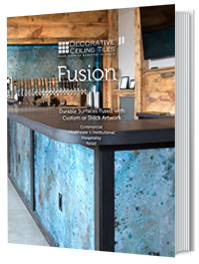How to Hide Outlets in Backsplash – Step by Step Guide
Written by Milan Jara on 11th Oct 2022

Want to hide unsightly outlets in your kitchen? We teach you how to hide outlets in backsplash for a more visually cohesive look.
If you want a gorgeous kitchen backsplash, you need to consider the electrical outlets within your walls. Electrical outlets can be a source of frustration for many homeowners looking to install their backsplash as they may need to make a space and create a cut-out for the outlet. We teach you how to hide outlets in backsplash.
Kitchens have a standard number of outlets (if they are regulated). Switches are necessary to daily living - they simply can’t be avoided. Therefore, we must find ways to deal with them when installing a backsplash.
A gorgeous design doesn’t have to be spoiled by placing a white outlet and switches in the design's center. One option is to hide the outlets so they aren’t as visible. You can achieve this by using ornamental covers or relocating the outlet, making the kitchen functional and creating a harmonious look.
Kitchen Electrical Codes
In most kitchens, with the smallest kitchens being the only exception, there are opportunities to conceal a countertop appliance by simply moving them into an appliance garage or a tall cabinet.
On the other hand, electrical codes state that outlets cannot be placed with their face up on a kitchen counter. They must also be located less than 48” apart on walls with base cabinets running 12 inches or higher.
Building rules also state outlets near sinks need GFCI outlets (ground-fault circuit interrupter) for obvious reasons - water and electricity don’t mix.
GFCI outlet placement fixes the electrical flow when a higher-than-normal current is detected. It warns that energy is about to ground through to a human, nearby object, or water. These switches have reset and test buttons on the face, making them obvious in a kitchen space.
How to Hide Outlets in Backsplash
Here are a few tips for incorporating electrical outlets in kitchen designs. Most are simple but provide a nice touch when incorporating outlets into your design.
Use Outlet Strips Along Your Upper Cabinet

While it may not be possible to fully conceal a wall outlet, there are times when power strips placed beneath wall cabinets (perhaps adjacent to an under cabinet light) may work well. Power strips can come in several finishes and can accomplish this task well.
Place them parallel to undercabinet lights to make them less noticeable. Another advantage to incorporating this element is that you can directly route electrical wiring beneath your countertop appliances. Adding a power strip will keep it out of view and lessen the chance of it becoming tangled.
Electrical codes indicate outlets cannot be placed more than 20” higher than a worktop. Exceptions are made for those with physical challenges, peninsulas, or islands where the height limits are not met.
An upper cabinet is usually 15” to 20” above a cabinet. Homeowners can group their standard outlets and place them within two to three upper cabinets. You can store small appliances there, but you will need proper cabinet organization to allow you to plug them in and pull them out when needed. You gain access by opening a cabinet door, and the outlet is easily concealed.
Install a Pop Up Outlet

Pop-up countertop outlets may provide a good solution if you just want to use an outlet when needed. They appear by using a gentle touch, permitting easy access when needed. If you are not using it, all you see is its visible, flat outlet cover. To further conceal it, use a color close to that of your backsplash.
You can also use a printed image of your countertop and adhere it to the cover, so it blends in even more.
Install Paintable, Colored, or Back Painted Glass Covers
You can buy and install these matching covers pretty easily. They are the most affordable option when blending in outlets to a backsplash.
If your kitchen has a backsplash that is back painted or consists of a glass tile, you will have something that easily blends in by using a glass outlet over.
This option is almost identical to paintable covers, except that you paint the backside of the glass cover. You install it with the unpainted side facing outwards. It provides a smooth glass finish and is simple to maintain. Glass and surface cleaners will remove any oils without damaging the finish.
Horizontal and Low Outlet Strips
If your kitchen doesn’t contain upper cabinetry above your countertops, you can put outlets a bit lower and horizontally along the beginning of the backsplash tile. You can use a tile backsplash setter to incorporate your outlets into the backsplash pattern by simply adjusting it horizontally.
For tiles where it still looks a bit intrusive, you can hide them behind bottles or smaller appliances.
Group Your Outlets Together
Grouping accomplishes two objectives. It places an appropriate number of kitchen outlets where you need them the most, and you can incorporate positioning and size into your design. The wall plate cover is like kitchen tiles found in a backsplash since you often find them in groups of threes.
Conceal Them in a Design

If you can’t hide them, find a matching face cover that will conceal them visually in your design. They don’t have to stick out, and you tend only to notice them when things are plugged in or if someone is looking closely.
Conclusion
When it comes to how to hide outlets in backsplash, there are plenty of options available. Hiding them isn’t complicated; you can simply be creative in their location. Find something that works best for you and how you use your kitchen, as not all solutions will work for everyone.




